Rhodobryum roseum is an attractive moss that grows primarily on thin soils over rocks in woodlands. The upper leaves form a crowded rossette that becomes erect and rather contorted when dry. Sporophytes are rarely produced.
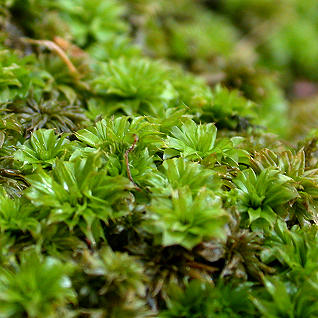
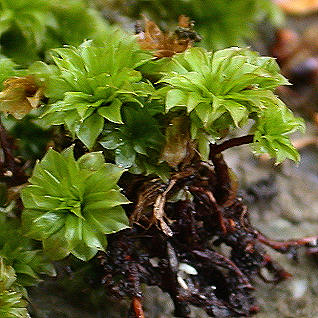
Rhodobryum roseum is an attractive moss that grows primarily on thin soils over rocks in woodlands. The upper leaves form a crowded rossette that becomes erect and rather contorted when dry. Sporophytes are rarely produced.


Plants are emerging a bit later than they have in recent years but there are many spring flowers to be seen now in central NY. Here are a few that I photographed today
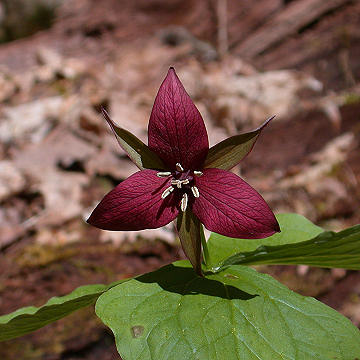
Stinking Benjamin (Trillium erectum)

Wood Horsetail (Equisetum sylvaticum)

Marsh Marigold (Caltha palustris)

American Fly Honeysuckle (Lonicera canadensis)
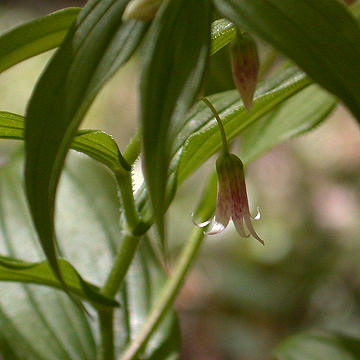
Rose Twisted-stalk (Streptopus lanceolatus)
American Golden Saxifrage (Chrysosplenium americanum) is a small member of the Saxifrage family with creeping stems that root at the nodes. It grows in muddy or springy soil in shaded areas. The leaves are rounded and entire or obscurely toothed, typically opposite lower on the stem and becoming alternate higher up.

The flowers lack petals and have four ovate sepals that range from greenish-yellow to greenish brown-purple. The disk of the flower can be green, reddish, or brown-purple. The most colorful aspect of the flowers are the 8 red stamens.
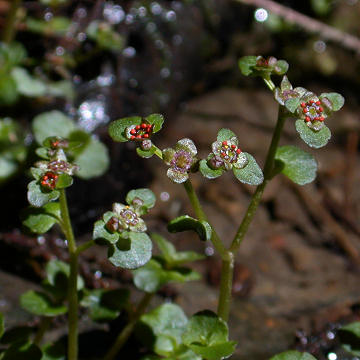
Branching stems each ending in a single flower
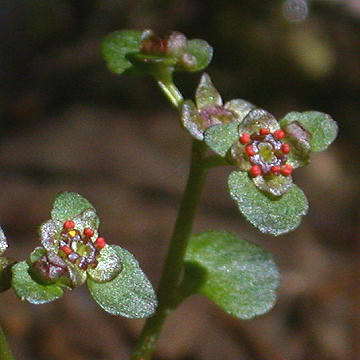
Closeup of flower
Spring begins in only a few days, and while the showier spring ephemerals won’t be up for at least a month there should be some buds breaking in the coming weeks. Skunk cabbage is already blooming in some places, and soon some of the following should be emerging.
Coltsfoot (Tussilago farfara) sends up its dandelion-like flowers before its leaves. It is a native of Europe and Asia and has naturalized throughout North America. It has been used medicinally as a cough-suppressant but there now evidence that a chemical constituent of the plant is a powerful mutagen. It is typically found in disturbed areas.
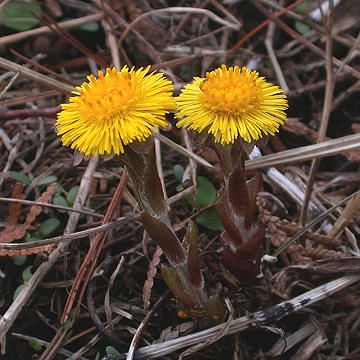
In wetlands one may find Sweetgale (Myrica gale) blooming in early April. This plant associates with nitrogen-fixing bacteria and the crushed leaves smell much like bay leaves. It is in the same family as Bayberry (Morella pensylvanica), which has fragrant berries that have been used to make candles.
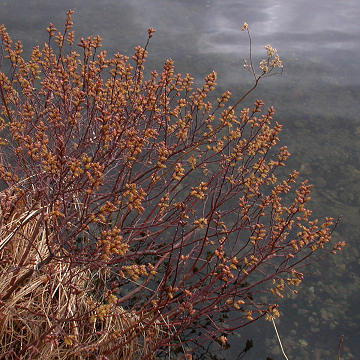
In moist woods of Central New York one can find Spicebush (Lindera benzoin), a shrub with fragrant leaves and orange or red berries that ripen in the fall. The floral effect of Spicebush is reminiscent of Forsythia but not quite as showy. It is the larval food plant of the spicebush swallowtail.
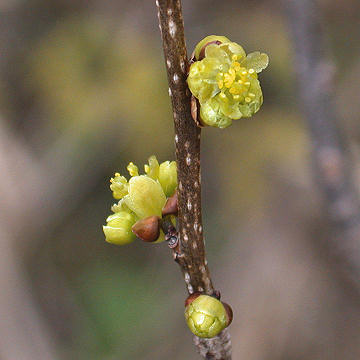
Eastern North America has a few endemic sundews (Drosera spp.), all of which occur in acid habitats like bogs. The most common in New York State is the round-leaved sundew (Drosera rotundifolia). It has round leaves (obviously!) that are covered with stiff glandular hairs each tipped with a sticky drop of “dew”. The leaves are often a bright red which serves to attract insects, and the sticky glands trap the insects. After capturing an insect the leaf usually folds inward to increase surface contact and digestion occurs with the aid of enzymes secreted by the leaf.
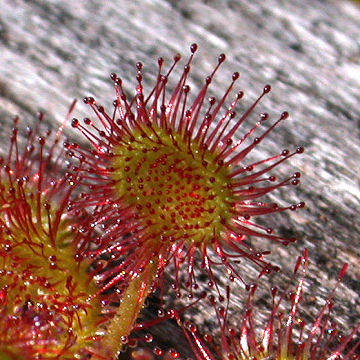
A species with more elongate leaves that also occurs in our area in the narrow-leaved sundew (Drosera intermedia). I found this specimen growing along one of the rivers that runs through the New Jersey Pine Barrens. The thread-leaved sundew (Drosera filiformis) also occurs in the Pine Barrens and it has much longer and narrower leaves. I have not yet found this latter species growing in the wild and it is quite rare in NY.
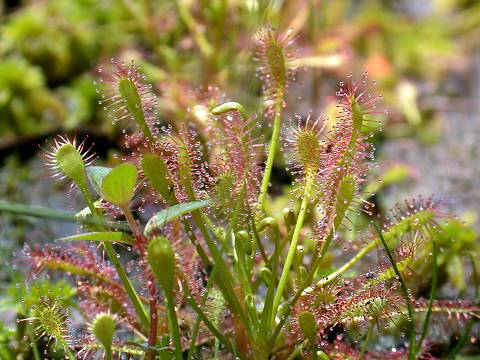
A popular subtropical sundew for terrarium culture is Drosera tokaiensis from Japan, which is a natural hybrid of D. rotundifolia and D. spatulata. It is easy to grow from seed and does not require a period of dormancy like our temperate sundews.
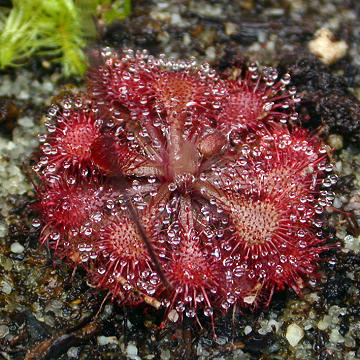
Sundews can be grown under the same conditions as the Venus Flytrap. A mixture of peat and sand works well for the substrate. Ambient conditions should be kept humid and only distilled water should be used. Bright light will bring out the best color. Plants grown in moderate light will tend to be more green, and plants grown in low light may decline over time. When growing temperate sundews the plants may form a tight rosette late in the growing season and this is an indication that they are going dormant. Such plants can be placed in a refrigerator for several months to break dormancy.
With Christmas just a few days away I figured it would be a good time to discuss some of the plants often associated with the holiday. Besides trees, probably the one that most often comes to mind is the poinsettia (Euphorbia pulcherrima). The poinsettia is native to Mexico and South America. It is a member of the spurge family (Euphorbiaceae), many members of which produce milky latex sap and showy bracts (modified leaves) that surround one or more floral structures called cyanthia. A cyanthium is composed of a single female flower partially surrounded by a cup-like involucre topped by five simplified male flowers. In the poinsettia the cyanthia are yellow-green and the floral bracts resemble the leaves but are large and scarlet red.
A long-standing myth is that the poinsettia is poisonous due to the death of a 2 year old child in 1919 that was falsely attributed to ingestion of this plant. While the plant is not considered edible, the toxicity of the plant is quite low and at worst it may cause upset stomach or vomiting if eaten.
Another popular plant this time of year is the Christmas Cactus, which is actually represented by a few species mostly in the genus Schlumbergera. In the wild they are epiphytic cacti, growing on trees in forests of South America. What appear to be leaves are actually flattened stems. Sections of the stem root easily in a loose potting mix that includes a good proportion of sand. Flowering is triggered by short days and long nights, as is the case with poinsettia. While I don’t have any pictures of the latter, I did manage to find a few pictures of a Christmas Cactus in bloom.

Christmas Cactus
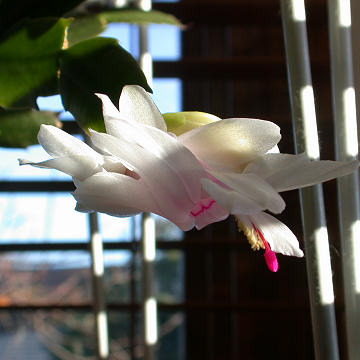
I will end this with a perhaps less commonly known plant associated with the holiday, and one that is native to Eastern North America. The Christmas Fern (Polystichum acrostichoides) is so named because it was once popular for use in Christmas decorations due to its tough, evergreen leaves that can be found throughout the year, even under snow. It grows on well-drained soils in rich, shady woodlands.
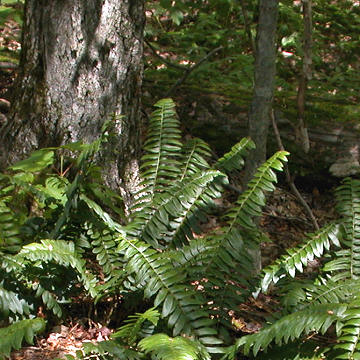
Christmas Fern
In early September of this year I found this plant for the first time growing in a local swamp. The specific epithet references the fact that this plant also occurs in China. There is currently an entry for this species in the Flora of China but none yet for the Flora of North America. The leaves resemble Wild Carrot while the flowers look very much like Poison Hemlock (Conium maculatum). The genus is a concatenation of the latter genus and Selinum, another genus in the carrot family native to Europe and Asia.
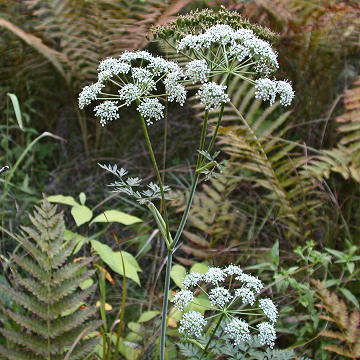
It is characterized by having flowers in a true umbel, leaves that are 2-3 compound, smooth and dorsally flattened fruit, and a cluster of fibrous roots.
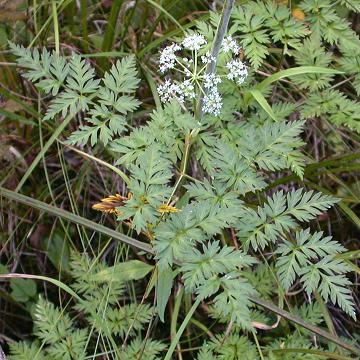
Mature fruit has a deeply bifid carpophore (elongated section of the receptacle between the carpels as a central axis), and conic stylopodium (enlargement of the base of the style). It grows to a height of over 30 cm at maturity.
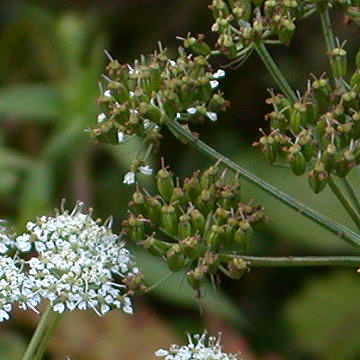
Populations appear to be secure in NY state but it is listed as endangered in several other states according to the USDA.
There are two species of ‘beech ferns’ that occur in eastern North America. They have traditionally been placed in the genus Thelypteris and this how I treat them here. However, recent evidence suggests inclusion of these ferns in a segregate genus (Phegopteris) instead.
In Broad Beech Fern (Thelypteris hexagonoptera) the lowest pair of pinnae (leaflets) are longer than the second pair. In addition, the rachis is herbaceous-winged throughout. This species forms colonies in moist or dry woodlands.
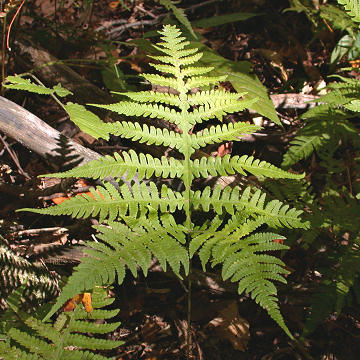
Broad Beech Fern
In Long Beech Fern (Thelypteris phegopteris) the lowest pair of pinnae are shorter than the second pair and the rachis is no herbaceous-winged between the lower two pairs of pinnae. The fronds also tend to be narrower than those of Broad Beech Fern. This species prefers rocky stream-side habitats and is common along waterways in the Adirondacks of NY.

Long Beech Fern
I recently added species pages for Round-leaved Serviceberry (Amelanchier sanguinea), Bristly Sarsaparilla (Aralia hispida), and Devil’s Walkingstick (Aralia spinosa). The latter two are interesting relatives of the common Wild Sarsaparilla (Aralia nudicaulis).
Devil’s Walkingstick is the only woody member of the genus that occurs in the Northeastern U.S. It mainly occurs from Delaware south but has been introduced further north. Rather showy in both flower and fruit, this species has upright stems armed with large prickles and impressively large compound leaves.
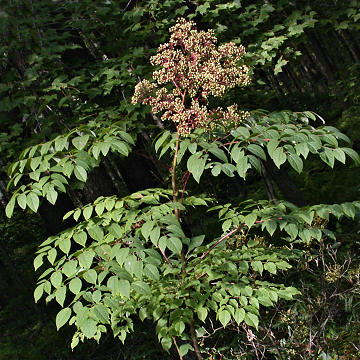
Bladderworts are carnivorous plants that form tiny bladder-like traps capable of capturing small organisms. Most species in the Northeastern U.S. are aquatic but a few species are terrestrial. Purple Bladderwort (Utricularia purpurea) is an aquatic species that occurs in soft, quiet waters of the Atlantic coastal states and sporadically further inland. It flowers from July to September.


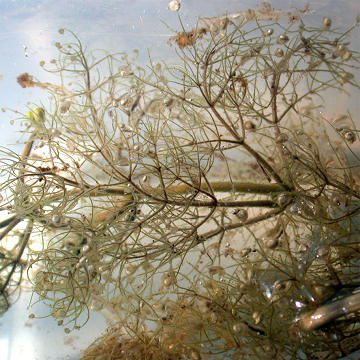
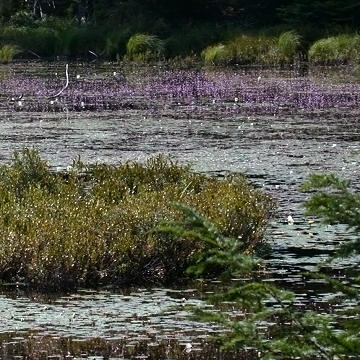
Powered by WordPress